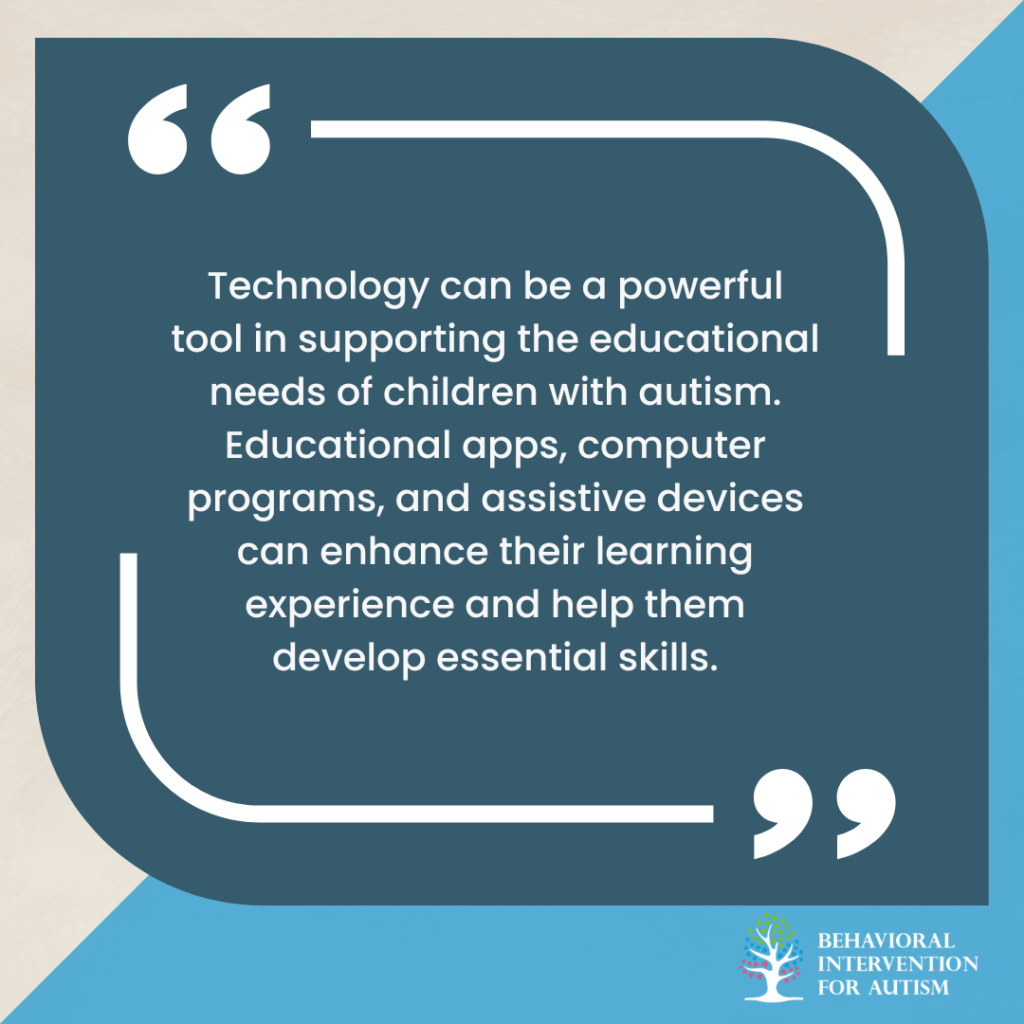
Table of Contents
It is important for parents and caregivers to have a deep understanding of the unique challenges and requirements that come with meeting the needs of children with autism. This article explores two key aspects of understanding autism needs: the importance of early intervention and the identification of behavior triggers and responses.
Early Intervention Importance
Early intervention is crucial for children with autism. Seeking help as soon as there are suspicions of autism is important for treatment success. Studies have shown that early intervention is the most effective way to speed up a child’s development and reduce the symptoms of autism over the lifespan.
By providing specialized therapies and interventions at an early age, children with autism can receive the support they need to develop essential skills, improve communication, and enhance social interactions. Early intervention programs often focus on areas such as speech and language therapy, occupational therapy, and applied behavior analysis (ABA).
Behavior Triggers and Responses
Understanding what triggers a child’s challenging or disruptive behaviors and what elicits a positive response is crucial for parents and caregivers. By identifying these triggers, it becomes possible to troubleshoot problems and prevent or modify situations that cause difficulties for the child.
Each child with autism may have unique behavior triggers and responses, so it is important to observe and document patterns of behavior. These triggers can include sensory stimuli, transitions, changes in routine, or social situations. By recognizing these triggers, parents can make adjustments to the environment or provide appropriate coping strategies to help the child manage their reactions.
In addition to identifying triggers, understanding the child’s responses is equally important. This involves recognizing the signs of distress, anxiety, or sensory overload, as well as identifying the strategies or interventions that can help alleviate these challenges. It may involve providing a calming sensory break, redirecting attention, or using visual supports to enhance understanding.
By being attuned to behavior triggers and responses, parents and caregivers can create a supportive and nurturing environment that minimizes stress and maximizes the child’s ability to learn and grow.
Supporting Strategies
When it comes to fulfilling the needs of children with autism, there are several supporting strategies that can make a significant difference in their development and well-being. These strategies include positive reinforcement, consistent routines, and building a support system.
Positive Reinforcement
Positive reinforcement plays a crucial role in helping children with Autism Spectrum Disorder (ASD) understand and learn appropriate behavior. Praising and rewarding good behavior can go a long way in motivating and reinforcing positive actions. It’s important to focus on acknowledging and highlighting the child’s strengths and achievements, no matter how small they may seem. This helps build their self-esteem and encourages them to continue practicing desired behaviors.
Consistent Routines
Creating a consistent and highly-structured schedule or routine for children with autism is essential. Consistency helps reinforce learning and provides a sense of stability, which can be comforting for individuals with ASD. Having a predictable routine allows them to anticipate what comes next, reducing anxiety and promoting a sense of security. It’s important to establish regular schedules for meals, therapy sessions, school activities, and bedtime. While it may not always be possible to stick to the routine perfectly, it’s helpful to prepare children for any changes or deviations whenever possible.
Building a Support System
For parents and caregivers of children with autism, building a strong support system is crucial. Connecting with other families facing similar challenges can provide emotional support, valuable information, and practical advice. Joining support groups or seeking out autism-specific organizations can create a network of individuals who understand the unique experiences of raising a child with autism. These support systems can offer a safe space to share concerns, celebrate achievements, and exchange resources and strategies. Additionally, professionals such as therapists, doctors, and educators can also be part of the support system, providing guidance and expertise.
By implementing these supporting strategies, parents and caregivers can create a nurturing environment that caters to the needs of children with autism. Positive reinforcement fosters positive behavior, consistent routines provide stability, and a strong support system offers emotional support and valuable resources. Remember, every child with autism is unique, so it’s important to tailor these strategies to their individual needs and preferences.
Essential Support for Children
When it comes to meeting the needs of children with autism, certain essential supports can make a significant difference in their overall well-being and development. This section will explore three key areas of support: structure and security, visual instructions, and coping mechanisms.
Structure and Security
Structure is vital for children with autism, providing a sense of security and reducing anxiety. Establishing regular schedules for meals, therapy, school, and bedtime can help anchor their day, acting as a reliable roadmap. By adhering to consistent routines, parents and caregivers can create a stable environment that promotes a sense of stability for the child. It’s important to prepare children for changes whenever possible, as unexpected disruptions to their routine can be challenging for them to navigate.
Visual Instructions
For children with autism, visual cues and written instructions are often more effective than verbal instructions. Utilizing pictures, diagrams, and demonstrations can make processes more understandable and less intimidating. Visual supports, such as visual schedules or step-by-step picture guides, can be invaluable tools for teaching new skills and promoting independence. These visual aids provide clear and concrete information, helping children with autism better comprehend and follow instructions.
Coping Mechanisms
Coping strategies are essential for children with autism to manage sensory overload and navigate challenging situations. Every child is unique, so it’s crucial to identify coping mechanisms that work best for them. Techniques such as rocking in a chair, deep breathing exercises, listening to calming music, or engaging in brief periods of exercise can help children with autism regulate their emotions and reduce stress. These coping strategies should be personalized to the individual child, taking into account their specific needs and preferences.
By providing essential support in the form of structure and security, visual instructions, and coping mechanisms, parents and caregivers can create a nurturing and empowering environment for children with autism. These supports contribute to their overall well-being, while also fostering their independence and ability to navigate the world around them. It’s important to remember that each child is unique, so it may take time and patience to identify the specific supports that work best for them.
Promoting Independence
When it comes to supporting children with autism, promoting independence is a key goal. By focusing on self-help skills, creating an organized environment, and setting clear expectations, parents and caregivers can empower children with autism to become more independent and confident.
Self-Help Skills
Self-help skills are crucial for fostering independence in children with autism. These skills include tasks such as brushing teeth, washing hands, getting dressed, and making a snack. Teaching and reinforcing these skills through Applied Behavior Analysis (ABA) sessions can be highly effective. Although progress may be gradual, celebrating small victories as milestones towards independence is important.
- Brushing teeth
- Washing hands
- Getting dressed
- Making a snack
Organized Environment
Children with autism thrive in environments that are organized and predictable. Providing structure and clear routines helps them feel secure and reduces anxiety. Regular schedules for meals, therapy, school, and bedtime act as reliable roadmaps for their day. When changes are necessary, it is important to prepare children in advance whenever possible to help them navigate uncertainties.
Clear Expectations
Clear expectations play a vital role in promoting independence in children with autism. Providing information about new situations, discussing activities, and giving them time to process information can help them understand and prepare for what lies ahead. When expectations are communicated clearly, children with autism can better anticipate and navigate their daily routines.
To enhance understanding, visual cues and written instructions are often more effective than verbal instructions. Using pictures, demonstrations, or visual schedules can make processes more understandable and less intimidating for children with autism. These tools provide a visual reference and step-by-step guidance, enabling children to follow along and complete tasks more independently.
- Enhance understanding
- Reduce anxiety
- Facilitate independence
By focusing on self-help skills, creating an organized environment, and setting clear expectations, parents and caregivers can empower children with autism to develop essential life skills and foster independence. It is important to recognize that each child is unique, and strategies should be tailored to their individual needs and strengths. With patience, support, and consistent practice, children with autism can achieve greater levels of independence and confidently navigate their daily lives.
Educational Support
When it comes to meeting the needs of children with autism, educational support plays a crucial role in their development and overall well-being. This section will explore three essential components of educational support: early intervention services, technology assistance, and socialization opportunities.
Early Intervention Services
Early intervention services are a vital part of supporting children with autism spectrum disorder (ASD). Many children with ASD receive these services and are eligible for additional support through their local school district by the age of 3. Early intervention programs focus on providing therapy for speech/language, behavior, or sensory concerns.
One key aspect of early intervention is the development of an individualized education program (IEP). The IEP outlines specific goals and strategies tailored to the child’s unique needs. It is regularly reviewed and updated to ensure that the child is making progress and receiving appropriate support.
By engaging in early intervention services, children with autism can benefit from targeted interventions that help improve their communication skills, social interactions, and overall development. These services provide a foundation for further learning and growth as the child progresses through their educational journey.
Technology Assistance
Educational apps and computer programs specifically designed for children with autism can assist in improving verbal skills, social skills, behavior, and focus. These interactive tools provide engaging learning opportunities and can be customized to meet the individual needs of the child.
Assistive devices, such as speech-generating devices, can also be beneficial for children who have difficulty speaking. These devices allow them to communicate their thoughts and express themselves effectively.
By incorporating technology into the educational journey of children with autism, parents and educators can provide them with additional tools and resources to enhance their learning, communication, and overall development.
Socialization Opportunities
Socialization is a critical aspect of a child’s development, including those with autism. Providing socialization opportunities is vital for children with autism to practice their social skills, make friends, and foster meaningful connections with their peers.
Encouraging playdates and social activities with other children can help children with autism develop and refine their social skills in a comfortable and supportive environment. Additionally, joining social skills groups specifically designed for children with autism can provide structured opportunities to learn and practice social interaction in a guided setting.
By creating opportunities for socialization, parents and caregivers can support the social development and well-being of children with autism, helping them build important social connections and navigate social situations more effectively.
Health and Well-being
Ensuring the health and well-being of children with autism is of paramount importance. In this section, let’s explore key aspects related to physical activity, emotional support, and handling bullying.
Physical Activity Benefits
Engaging children with autism in physical activity can bring about numerous benefits. Physical activity not only improves fitness, coordination, and strength but also enhances body awareness. Additionally, it can help prevent childhood obesity, decrease repetitive behaviors, and improve attention span.
Participation in sports programs specifically designed for children with autism, such as Special Olympics, karate, therapeutic horseback riding, and aquatic therapy, can provide opportunities for physical activity while catering to their unique needs. These programs are tailored to promote physical development, social interaction, and overall well-being.
Emotional Support
Emotional support is crucial for children with autism. Parents and caregivers should be attentive to the emotional needs of their children and provide a safe and nurturing environment. It is essential to address any signs of depression or anxiety promptly.
Seeking help from professional counselors or therapists who specialize in working with individuals with autism can be beneficial. These professionals can offer guidance and strategies to manage emotions and develop coping mechanisms.
Encouraging open communication and fostering a supportive family environment can also contribute to the emotional well-being of the child. Creating a space where the child feels safe to express their feelings and concerns can make a significant difference in their overall happiness and mental health.
Handling Bullying
Children with autism may be more vulnerable to bullying due to their unique social and communication difficulties. It is crucial for parents and caregivers to be vigilant and take proactive measures to address and prevent bullying.
If a child experiences bullying, it is important to communicate with school administrators and teachers to ensure appropriate intervention. Talking with the child about their experiences and emotions can help them process their feelings and develop strategies to cope with bullying situations.
Role-playing scenarios with the child can be an effective way to teach them how to handle bullies and respond assertively. Encouraging the child to develop social skills, assertiveness, and self-advocacy can empower them to navigate challenging social situations.
By prioritizing physical activity, providing emotional support, and addressing bullying, parents and caregivers can contribute to the overall health and well-being of children with autism. It is essential to create an inclusive and nurturing environment that supports their unique needs and fosters their growth and development.
Sources:
https://getgoally.com/blog/what-are-the-needs-of-a-child-with-autism/
https://kidshealth.org/en/parents/autism-checklist-bigkids.html
- How to Get Rid of Autism - April 25, 2024
- Signs My Autistic Child Will Talk - April 24, 2024
- Giftedness and Autism: What You Should Know - April 24, 2024






